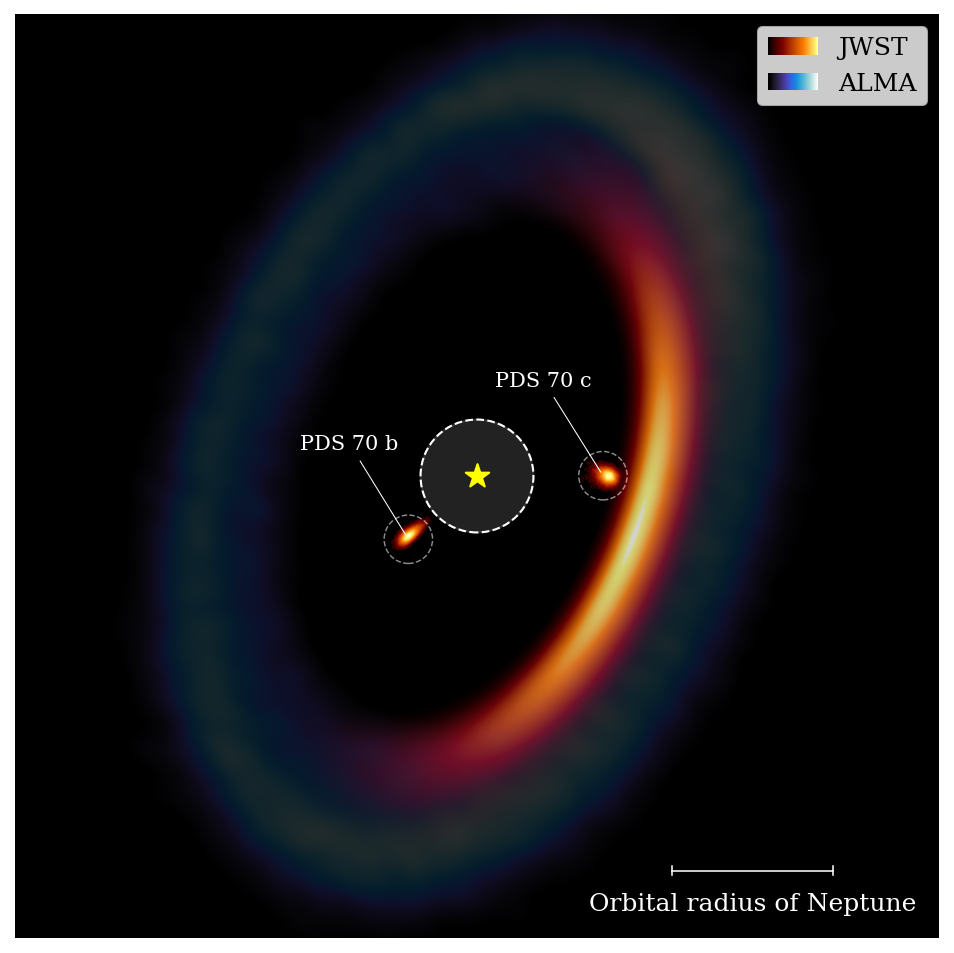An international team, including U-M researchers, leverages JWST for insights into planetary formation around young star systems

University of Michigan researchers are part of an international team using the JWST to gain a groundbreaking view of planetary formation. The team examined PDS 70, a young star with two nascent planets, situated 370 lightyears away. This provides a rare opportunity to observe planet formation in its early stages.
Led by University of Victoria’s Dori Blakely, the study utilized JWST’s advanced tools to reveal intricate details about the planets and their surrounding gas and dust. “What we’re trying to do with JWST is confirm ideas about these protoplanets that have been speculated upon by other observatories,” said Michael Meyer of U-M.
The findings, published in The Astronomical Journal, give new insights into planetary growth as they compete with stars for resources. PDS 70, a young 5-million-year-old star, is surrounded by a disk of gas and dust, where planets PDS 70 b and c are forming.
Using JWST’s NIRISS instrument, the team employed an aperture masking interferometry technique to filter light and reveal hidden system details, offering a clearer view of the forming planets. “This innovative technique is like turning down the young star’s blinding spotlight so you can see the details of what’s around it—in this case, planets,” said René Doyon of IREx.
This method allows for the observation of features not visible through traditional imaging, paving the way for future studies of planet formation. “We’re using innovative techniques to look at planets in ways we’ve never done before,” added Loïc Albert from IREx.
JWST confirmed two giant planets are still in formation, gathering material from their disk. This supports the accretion theory, where planets grow by accumulating nearby gas and dust. The research provides crucial insights into planetary systems’ formation and evolution.
The study also hints at the presence of circumplanetary disks, potential moon-forming regions, around the young planets. These observations could shed light on the formation of planets like Jupiter and Saturn in our solar system.
“Seeing planets in the act of accreting material helps us answer long-standing questions about how planetary systems form and evolve. It’s like watching a solar system being built before our very eyes,” said Doug Johnstone from the National Research Council of Canada.
Further JWST observations are needed to verify if a faint, unresolved light within the disk gap is a new planet or a structure like a spiral arm. The research is part of the NIRISS Guaranteed Time Observations program.
—
Read More Michigan News










